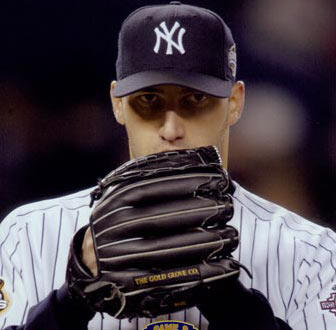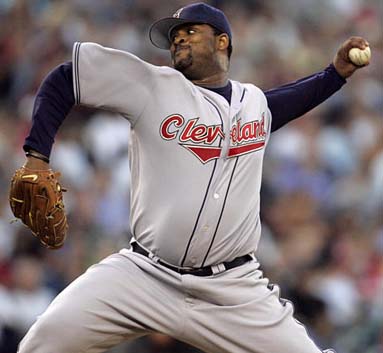The Yankees are the most storied and successful sports franchise in history, and their fan base lives and dies by the baseball season. As such, a hot debate topic among fans has become whether or not to allow Joba Chamberlain, their promising 22 year old fireballer, to start or relieve games. In 2007, Joba was called up to the major leagues to solve the team’s bullpen issues, despite his role as a starter in the minor leagues. Joba was placed in the bullpen both to strengthen the reliever corps and to keep his own inning count down. Inning counts are typically in place to ensure that a young pitcher doesn’t blow his arm out by gradually increasing his innings over the early stages of his career.
At the start of the 2008 season, Joba found himself in the bullpen again, but this time he was slowly transitioned back to his natural place in the starting rotation. At this point, Joba still had an inning count restriction on him, and the logic was that by starting him in the bullpen and moving him back to the rotation mid-season, it would serve to keep his total innings lower. After being transitioned back to the rotation, Chamberlain continued to dominate until he was shut down in August for the remainder of the season due to a minor shoulder issue. Coming into the 2009 season, Yankees’ brass must make a decision about Chamberlain. While some insist that he should remain in the bullpen, I strongly disagree. The bullpen-crowd points to a minor shoulder injury Chamberlain endured at the end of the 2008 season, supposedly caused by too many innings. I would like to remind those who feel that way about the mechanic of pitching. Going through a windup and throwing a baseball is one of the most unnatural motions the human body can perform. That being understood, most pitchers find themselves on the disabled list at one point or another, and Chamberlain is no exception. Joba is expected to make a full recovery and be prepared for spring training.
Relief pitchers are generally pitching out of the bullpen for a reason. There might be legitimate long term injury concerns, a lack of arm endurance, or perhaps just a smaller pitch repertoire that limits a pitchers ability to go through a lineup more than once. Joba Chamberlain, however, does not have any long term injury concerns, at least that are presently apparent. Arm endurance isn’t an issue either, as he has shown that he can remain effective late into the game. Even against one of the better lineups in the league, Joba shutdown the Red Sox for seven strong innings, proving his worth late into a game. The typical reliever has 1-3 types of pitches and the typical starter has 3-6 types of pitches. Joba has 4 major league quality pitches, giving him the flexibility that relievers do not have. Oh, and he can consistently make the radar gun display a three-digit number; you can count the other pitchers that can do that on one hand.
Without a doubt, Joba Chamberlain has the talent to become one of the top pitchers in all of baseball, if his career stays on track. If that is true, then wouldn’t you want to have him play as much as possible? Normally a reliever throws about 50-80 innings in a year. A healthy starter will through upwards of 200 innings in a season. So, you tell me: would you rather have someone of Joba’s talent pitch 60 innings a year, or 200? If you said anything other than “Gee, I guess he really should start games”, then you are either wrong or a Red Sox fan.
The Yankees’ bullpen is even now much stronger than it was when Joba was originally called up. Breakout years from Edwar Ramirez, Jose Veras, and Phil Coke have lessened the need for Joba to pitch out of the bullpen. On top of that, we have the addition of Damaso Marte to the ‘pen and our top closer prospect, Mark Melancon, waiting in the wings. From a necessity standpoint, the Yanks may not even need Chamberlain in the bullpen. At this point, I believe the more pressing area for the team to address in the starting rotation. It is mightily convenient that Joba just happens to be poised to become the future ace of their pitching staff. This seems like an easy problem for me, and a problem that I bet most teams would like to have. Keep Chamberlain in the rotation, for his sake and the team’s sake.








